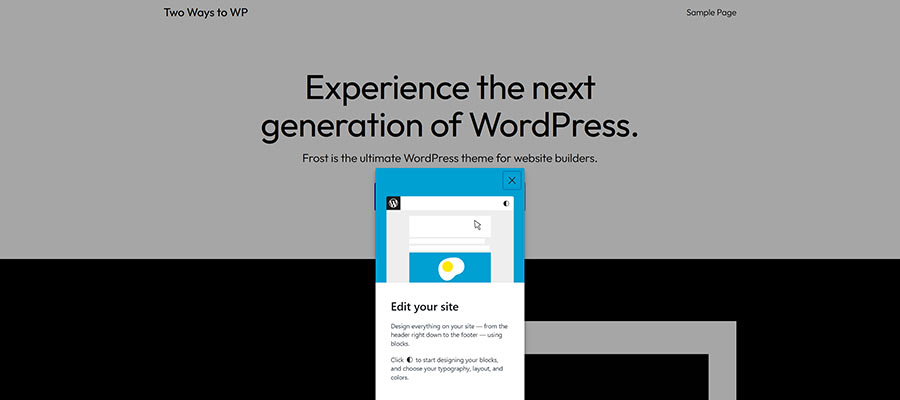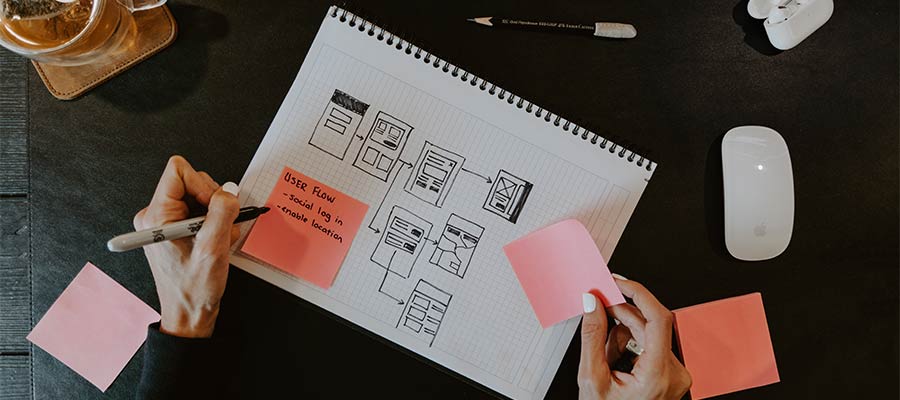WordPress has evolved steadily. It has added significant features, while somehow maintaining familiarity.
But much of the user and developer experiences are based on our choices. Do we go with a battle-tested classic theme or opt for a newfangled block theme? Do we embrace the Block Editor or stick with the trusty Classic flavor?
These are defining decisions. They chart a path for how we work with the content management system (CMS). And they influence everything from how we build a website to how content is created.
You might even say they’re distinctly different experiences. Here’s why I hope it stays that way.
Flexibility To Fit Any Type of Project
Flexibility has long been a strength of WordPress. Its open-source code and extensibility make for nearly endless customization.
Developers can tweak the front and back ends to match project needs. If the default functionality isn’t enough, you can build your own. And we can’t forget about the massive theme and plugin ecosystem.
This means that building virtually any type of website is possible. Single-page portfolios, enterprise-level multisite installations, and everything in between are within reach.
Still, the advent of the Block Editor (WordPress 5.0) and Site Editor (WordPress 5.9) raised a big question. How would these additions impact flexibility?
If anything, they add more avenues for customization. The Block Editor will work with any type of theme. And in some cases, it may eliminate the need for page builder plugins or hard-coded custom templates.
The Site Editor, meanwhile, allows us to build an entire website with blocks. Block themes can serve as solid no-code solutions. They may be the perfect fit for specific types of sites.
And if that weren’t enough, you can also combine the best of classic and block themes. Features like block template parts let theme developers create their preferred mix of tools.
Yes, WordPress is still flexible. Although one could make the case that choosing the right path may be harder than ever.

Concerns About the Present & Future
It’s great to have choices. But there are a few concerns with having two distinct ways of building with WordPress. Perhaps the biggest is how it impacts the future.
If you choose a classic theme, will it still be viable within a couple of years? Or will these themes have been phased out by then? That could conceivably leave you with a mess when it’s time for a redesign.
On the other hand, some rightly wonder if block themes are capable enough. The Site Editor is still relatively young. And blocks can’t account for every possible use case. Plus, block themes continue to make up a relatively small segment of the market.
As such, some will prefer the tried-and-true method of writing PHP and CSS. All the talk these days is about blocks. But it may be that classic themes are still the best fit for highly customized websites.
Taken together, it seems like developers are caught between worlds. After all, no one wants to go in the wrong direction. But is there a bad choice here?

You Can Still Build to Suit With WordPress
There has been some compelling debate about the current state of WordPress development.
Chris Coyier wrote a fantastic piece about the uneasy transition to blocks-for-everything. He wondered if perhaps PHP-based themes have met their demise. Ben Word, meanwhile, spoke of how you can use PHP to get the best of both worlds.
Look around social media, and I’m sure you’ll find others who align with one stance or the other. For my part, I can identify with both points of view.
Each approach has its strengths. With that, maybe the decision should come down to what’s best for your project.
As a developer, there is great power in being able to build according to need. Since both classic and block themes are supported, there’s no reason we can’t use what works best for us.
If you feel like PHP-based themes aren’t where it’s at, why shouldn’t you use a block theme? And if block themes don’t provide enough flexibility, classic themes make perfect sense.
This is what separates WordPress from other platforms. You aren’t stuck with a single way to do things. Sometimes this can create extra layers of complexity. But it’s arguably better than being limited in how or what you can build.

The Beauty of More Options & Possibilities
Maybe WordPress isn’t always the best option for a given project. For instance, it may be overkill for a simple one-page site with no dynamic content. Thankfully, each of us can decide if that’s the case.
But I love that I can use WordPress to build that type of site. Or any other type of website. And I can choose a path to building that aligns with my needs.
Sure, there are drawbacks. And there are also areas of the CMS that are languishing. But by and large, WordPress works as advertised.
I understand that some may see the existence of block and classic themes as an unnecessary complication. But I choose to look at it as having two legitimate options to build a website. And I hope that continues to be the case.
The post WordPress Offers Two Very Different Paths: That’s a Good Thing appeared first on Speckyboy Design Magazine.

0 Commentaires